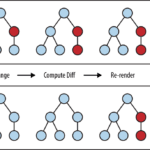Python is one of the most widely used programming languages, known for its simplicity and readability. For anyone starting their coding journey, understanding the basic functions in Python is essential. Whether you aim to write concise code or automate repetitive tasks, mastering functions can make your programming more efficient. Let’s explore Python functions, their significance, and some commonly used ones.
What Are Functions in Python?
Functions are reusable blocks of code designed to perform specific tasks. They simplify programming by avoiding repetitive code, improving readability, and making it modular. Functions are categorized into two main types: built-in functions and user-defined functions.
- Built-in Functions: These are predefined in Python and can be used without additional coding.
- User-defined functions: created by developers for custom functionality.
Functions accept inputs (called parameters), process data, and return outputs. Python uses the def keyword to define custom functions.
Why Are Python Functions Important?
Python functions serve several purposes in programming:
- Code Reusability: Avoid duplication of effort by reusing functions across programs.
- Modularity: Break down complex operations into manageable parts.
- Simplified Debugging: Spot issues quickly when the code is structured.
- Better Collaboration: Teams can understand modularized code more efficiently.
Structure of a Python Function
Here’s a standard format for defining functions in Python:
def: Keyword to define a function.function_name: The name of your function should be descriptive.parameters: Inputs the function uses.return: Outputs a value or result after execution.
Examples of Basic Functions in Python
Built-in Python Functions
Python offers numerous pre-built functions that cater to basic to advanced operations. Some common ones include:
- print(): Outputs data to the console.
- len(): Finds the length of sequences.
- input(): Accepts user input.
- type(): Returns the type of a variable.
- abs(): Returns the absolute value of a number.
How to Create a User-defined Function
Creating user-defined functions requires the def keyword, followed by the function’s name, and optionally parameters. For example:
Advantages of Using Functions
To further appreciate the power of Python functions, consider their advantages:
- Maintainability: Well-organized code makes programs easier to update.
- Improved Logic: Focus on discrete tasks while maintaining overall workflow.
- Increased Efficiency: Execute repetitive processes without rewriting code.
Understanding Parameters and Arguments
When defining functions, you use parameters as placeholders for the data you will input:
Example with Parameters:
Types of Arguments
- Positional Arguments: Assigned in order.
- Keyword Arguments: Named arguments in the function call.
- Default Arguments: Provide default values if no input is given.
- Variable-Length Arguments: Accepts multiple inputs using
*argsor**kwargs.
Best Practices for Using Functions in Python
- Use descriptive names for your functions.
- Limit the number of arguments to avoid confusion.
- Ensure your code inside the function is concise and focused.
- Always add comments to explain your function’s purpose.
Common Mistakes to Avoid
- Missing the
returnstatement where needed. - Overcomplicating functions with multiple operations.
- Using ambiguous names for functions.
- Neglecting proper testing of user-defined functions.
Advanced Function Techniques
This language offers advanced functionalities to make functions even more powerful:
Lambda Functions
One-liner anonymous functions can simplify your code:
Recursive Functions
A function calling itself for iterative tasks:
Real-World Applications of Python Functions
Python functions are used widely across industries.
- Web Development: API processing, user management.
- Data Analysis: Data cleaning, calculations.
- Automation: repeating routine tasks efficiently.
- Game Development: Managing game states or logic.
You may also like: What Is Virtual DOM: A Comprehensive Guide
Checklist of Basic Functions in Python
Here’s a quick checklist:
- Data Manipulation:
map(),filter(),reduce() - Math Calculations:
sum(),max(),min() - Data Type Conversion:
int(),float(),str()
Advantages of Python Built-in Functions
- No need for additional imports.
- Faster coding due to pre-tested functions.
- Seamless integration across projects.
Conclusion
Understanding the basic functions in Python can significantly boost your coding journey. By mastering built-in and user-defined functions, you’ll have the tools needed to tackle various challenges, write efficient programs, and develop solutions across multiple domains. Python’s modular approach to functions ensures ease of use, making it the go-to choice for beginners and experts alike.
FAQs
What are basic functions in Python?
Basic functions in Python include built-in functionalities like print(), len(), abs(), and user-defined functions for custom logic.
What are the types of arguments in functions?
There are positional, keyword, default, and variable-length arguments (*args, **kwargs).
Why are lambdas useful in Python?
Lambda functions are compact and allow creating small, anonymous functions for quick use, improving code efficiency.
Can Python functions call themselves?
Yes, this is known as recursion. Recursive functions are used for solving repetitive tasks like calculating factorials.



